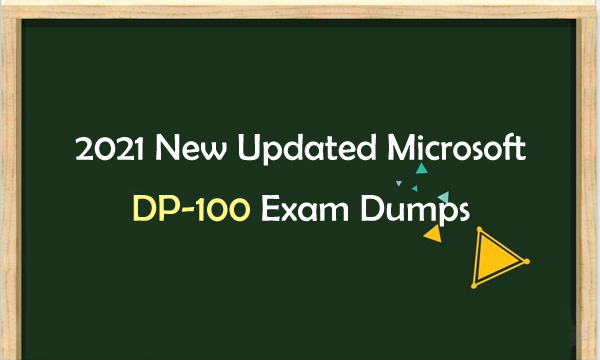2021 New Updated Microsoft DP-100 Exam Dumps
January 18,2021 02:51 AM
Designing and Implementing a Data Science Solution on Azure DP-100 exam dumps have been updated, which are the best material for you to pass the test and earn Microsoft Certified: Azure Data Scientist Associate certification. The Azure Data Scientist applies their knowledge of data science and machine learning to implement and run machine learning workloads on Azure; in particular, using Azure Machine Learning Service.

Microsoft Azure DP-100 Exam Information
Number of Questions: 40-60
Languages: English, Japanese, Chinese (Simplified), Korean
Test Center: Pearson VUE
Price: $165
Microsoft DP-100 Exam Topics
Microsoft certification DP-100 exam measures your ability to accomplish the following technical tasks.
Set up an Azure Machine Learning workspace (30-35%)
Run experiments and train models (25-30%)
Optimize and manage models (20-25%)
Deploy and consume models (20-25%)
Practice Updated Microsoft DP-100 Exam Dumps
Microsoft certification DP-100 exam dumps questions can help you test all the above topics. Share some Designing and Implementing a Data Science Solution on Azure DP-100 exam dumps questions and answers below.
1.You are determining if two sets of data are significantly different from one another by using Azure Machine Learning Studio.
Estimated values in one set of data may be more than or less than reference values in the other set of data. You must produce a distribution that has a constant Type I error as a function of the correlation. You need to produce the distribution.Which type of distribution should you produce?
A. Paired t-test with a two-tail option
B. Unpaired t-test with a two tail option
C. Paired t-test with a one-tail option
D. Unpaired t-test with a one-tail option
Answer: A
2.You create a binary classification model.You need to evaluate the model performance.Which two metrics can you use? Each correct answer presents a complete solution. NOTE: Each correct selection is worth one point.
A. relative absolute error
B. precision
C. accuracy
D. mean absolute error
E. coefficient of determination
Answer: B,C
3.You use the Azure Machine Learning SDK in a notebook to run an experiment using a script file in an experiment folder. The experiment fails. You need to troubleshoot the failed experiment.What are two possible ways to achieve this goal? Each correct answer presents a complete solution.
A. Use the get_metrics() method of the run object to retrieve the experiment run logs.
B. Use the get_details_with_logs() method of the run object to display the experiment run logs.
C. View the log files for the experiment run in the experiment folder.
D. View the logs for the experiment run in Azure Machine Learning studio.
E. Use the get_output() method of the run object to retrieve the experiment run logs.
Answer: B,D
4.You have a comma-separated values (CSV) file containing data from which you want to train a classification model. You are using the Automated Machine Learning interface in Azure Machine Learning studio to train the classification model. You set the task type to Classification. You need to ensure that the Automated Machine Learning process evaluates only linear models. What should you do?
A. Add all algorithms other than linear ones to the blocked algorithms list.
B. Set the Exit criterion option to a metric score threshold.
C. Clear the option to perform automatic featurization.
D. Clear the option to enable deep learning.
E. Set the task type to Regression.
Answer: C
5.You are building recurrent neural network to perform a binary classification.The training loss, validation loss, training accuracy, and validation accuracy of each training epoch has been provided. You need to identify whether the classification model is over fitted. Which of the following is correct?
A. The training loss increases while the validation loss decreases when training the model.
B. The training loss decreases while the validation loss increases when training the model.
C. The training loss stays constant and the validation loss decreases when training the model.
D. The training loss .stays constant and the validation loss stays on a constant value and close to the training loss value when training the model.
Answer: B
DP-100 Exam Dumps PDF & SOFT | 1 Year Free Update | Money Back Guarantee
- Related Suggestion
- Career Opportunities with Microsoft AI Certifications: A Path to Expertise in AI and Machine Learning January 17,2025
- How to Achieve the CP1 Cathodic Protection Tester Certification? December 22,2023
- CFPS Certified Fire Protection Specialist Exam Dumps Available November 13,2023
- Microsoft: Innovations and Certifications in 2023 April 12,2023
- Best Approach to Pass AZ-400 Exam March 05,2019

